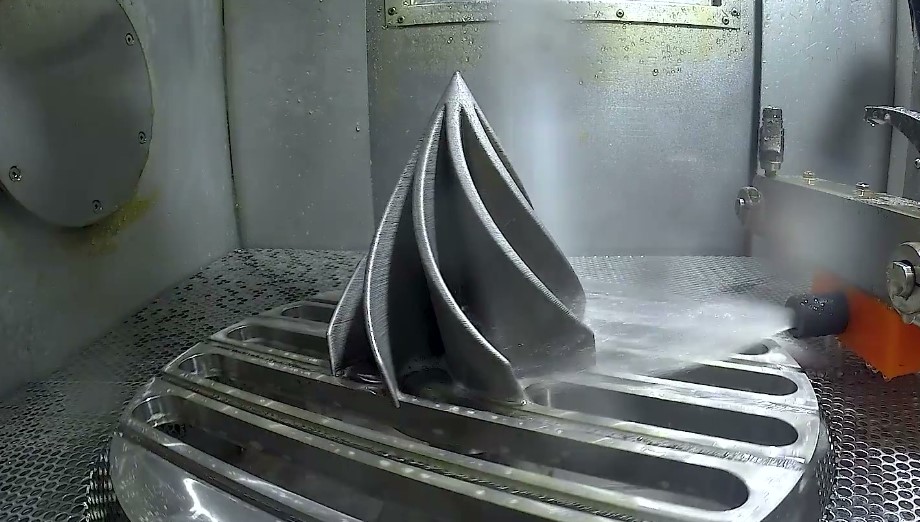You might not think that a 3D printer and a sculptor have anything in common, but you’d be wrong. While 3D printing companies usually focus on the automated parts of their process, there can be a tremendous amount of labor and post-processing required to finish a part. This depends on the metal 3D printing process, of course, but the idea is generally the same–parts require a lot of finishing work after the print. While such things are usually straight-forward, the flexibility of AM and importance of post-processing adds another layer of complexity to the process.
In this article, we’ll take a look at post-processing and how its continued improvement in metal am is allowing companies to topple the CNC giants.
What Exactly Is Post Processing and Why Is It So Important?
Post-processing is an umbrella term for any step that comes between the printing of a part and its shipping date. It encompasses all of the following items:
- Support structure removal
- Additional machining
- Curing and heat treatment
- Excess material removal
- Coloring adjustments
- Surface finishing
- Final inspections
Due to the variability of parts in AM, automating the above items is a challenge. This often leads to excess powder and metals being removed by hand. This level of manual processing—mostly absent in traditional manufacturing—is more akin to the work of carver or cobbler than a manufacturing factory. This handmade aspect can sometimes lead to inconsistencies in the final product. The manual aspect can also increase the cost. Experts generally estimate post-processing can account for 40% to 60% of a part’s final cost.
To continue competing with traditional manufacturing at scale, 3D printers are implementing automation in post-processing. Doing so will open the doors to increased cost reduction, and even more higher-quality production.
A Few Companies Raising the Bar for Post-Processing
If the recent Formnext 2019 conference is anything to go by, there are plenty of people already improving post-processing in metal am. Below are a few examples:
- Additive Manufacturing Technologies (AMT): AMT’s solution to post-process depowdering is built on a principle of simplicity. Just put the 3D printed parts in the rack, load them into the machine, and select the proper program. After that, just check the parts every 90 to 120 minutes to verify whether or not they’re fit for their intended purpose.
- Dye Mansion: This German company’s technology starts where industrial 3D printing stops. It currently manufactures four different machines. One that automates cleaning, two that help improve surface quality, and one designed to automate the dying and coloring process.
- PostProcess: This company is the first and only provider of intelligent post-printing solutions for AM. By relying on software instead of physical machines, they’re able to automate many stages in post-processing. Their partnership with Rosler, a big player in traditional manufacturing finishing, will likely lead to great strides in the 3D printing process.
3DEO’s Process Requires Substantially Less Post Processing
By printing parts with the best surface finish and tightest tolerances in the industry, combined with a high level of robotics and automation, 3DEO’s part cost is so low that the company is, for the first time in metal additive manufacturing, able to compete head-on with traditional manufacturing such as CNC machining and metal injection molding.
Do you have a part you want quoted? Give us a shout or request a quote.



